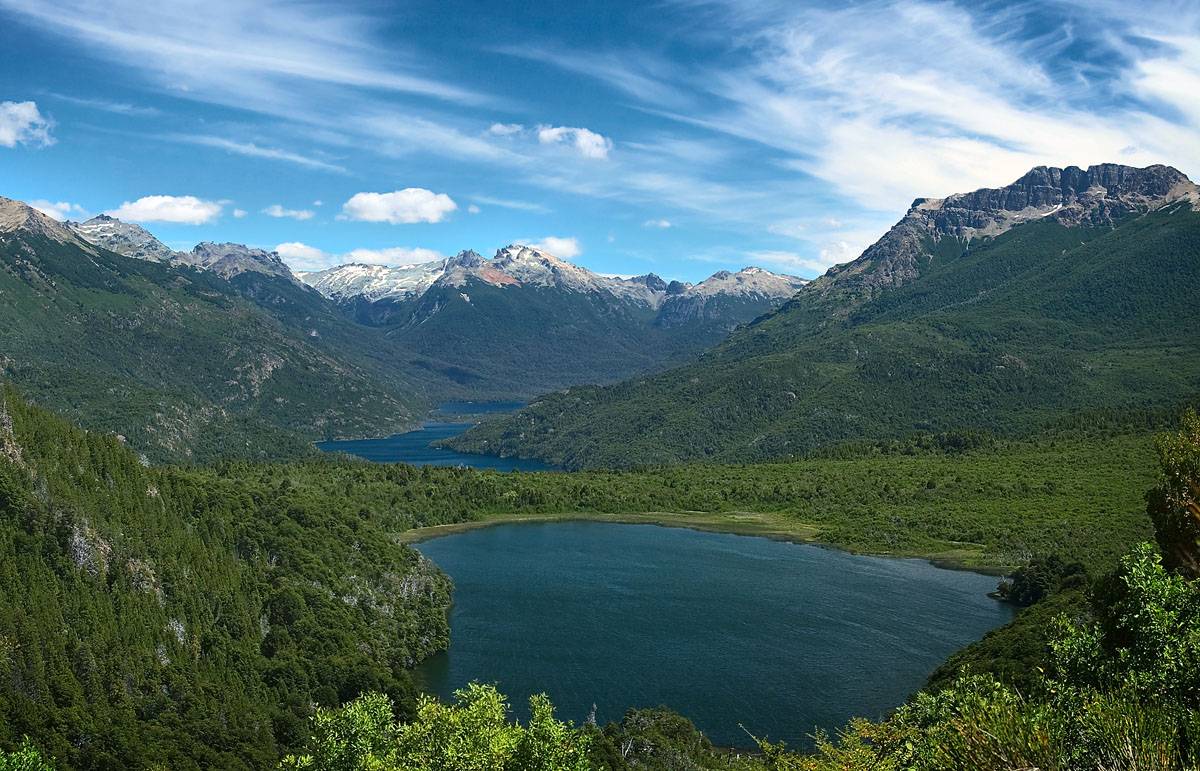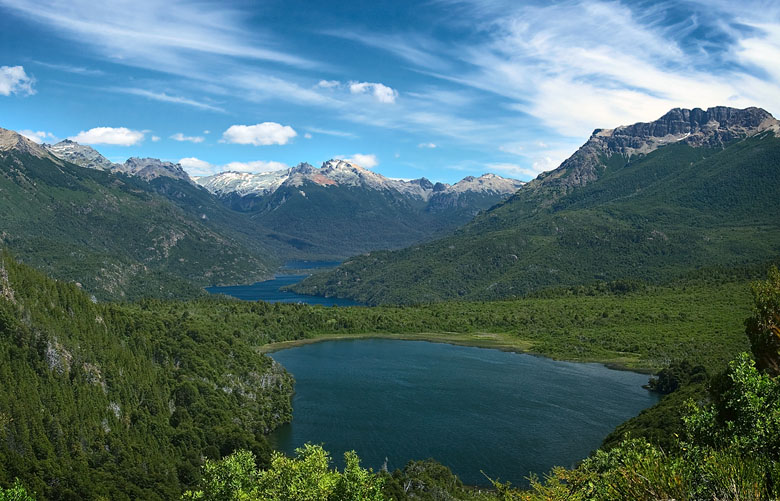

Northern Patagonia is home to the Lake District, a region encompassing parts of both Chile and Argentina with a high concentration of ancient forests, blue lakes, volcanoes, and picturesque alpine villages. Compared to the windswept glacier country of the south, the Lake District is lush, mild, and feels a world apart. It’s the Switzerland of Patagonia.
Technically, there are two distinct Lake Districts, one in Argentina and one in Chile. Argentina’s Lake District is anchored by Bariloche, the popular chocolate-loving resort town and adventure hub (and a great place for hiking). To the north is laid-back San Martín de los Andes with the scenic Route of the Seven Lakes connecting the two towns. Also in Argentina’s Lake District is fly-fishing capital Junín de los Andes, hippie enclave El Bolsón, and countless opportunities for hiking, rafting, fishing, mountain biking, and skiing.
Chile’s Lake District is anchored by Temuco to the north and Puerto Montt to the south. The Chilean side boasts an impressive six national parks and numerous other natural reserves and protected areas. Resort towns Puerto Varas and Pucón garner much of the attention and are great base camps for enjoying the outdoors. Both Chile’s and Argentina’s Lake Districts offer the full gamut of places to stay and things to do, from high-priced lodges and fancy golf courses to budget accommodations and free hikes.
An ideal trip would include both countries and 1–2 weeks or more of driving through the different mountain towns. Border crossings are limited—the major land crossing is at Lanín and the Andean Lakes Crossing is by boat—but both countries have much to offer and distances are relatively close. With less time, it would be nearly impossible to choose based on scenery, but Argentina’s Lake District is slightly cheaper and has livelier towns and tastier food.